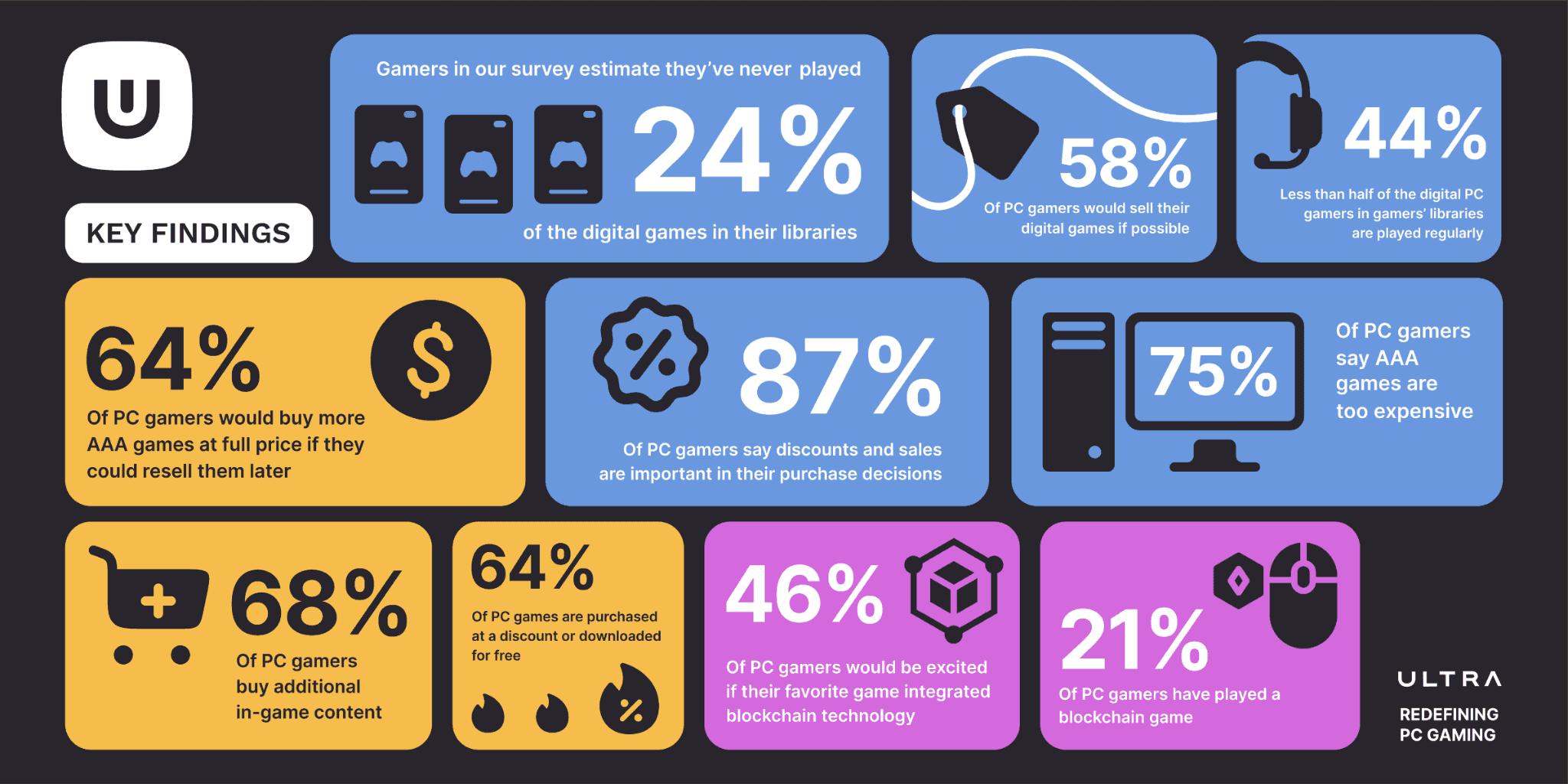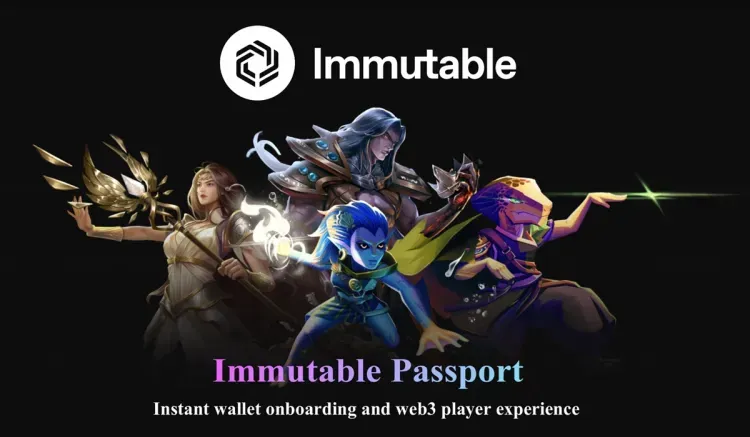
Player Experience (PX) in Crypto Gaming
Dive into the intricacies of Player Experience (PX) in Crypto Gaming, explore strategies and insights that pave the way for the wider adoption of blockchain-based gaming.
In the rapidly evolving world of gaming, the intersection of traditional gameplay and decentralized technologies has given rise to a new frontier known as Crypto Gaming. At the heart of this paradigm shift lies the Player Experience (PX), a crucial element determining the success of integrating mainstream players into the web3 ecosystem.
In this article, we dive into the intricacies of Player Experience (PX) in Crypto Gaming, exploring strategies and insights that pave the way for the wider adoption of blockchain-based gaming among the masses.
From user-friendly interfaces to innovative in-game economies, we unravel the key components that can captivate and retain a diverse audience, ultimately propelling the industry toward a more inclusive and decentralized future.

Play-To-Earn History
Since the peak of play-to-earn games in 2021, web3 has faced a period of critical evaluation. During its prime, iconic games like Axie Infinity were massively popular for players in developing countries such as Nigeria, Ghana, and the Philippines. These early play-to-earn games enabled users to earn significantly more than local minimum wages in developing countries.
But this golden era has since faced many setbacks, including the major Ronin token bridge hack. This combined with a declining global gaming market led to a substantial reduction in player retention and play-to-earn rewards. In crypto games, only a handful of these early web3 projects have managed to maintain steady growth, highlighting fundamental issues with the classic “play-to-earn” model.
One major challenge is the high entry cost in web3 gaming. Players often need to invest hundreds of dollars on NFTs and other in-game assets in able to participate in gameplay. And even those who can afford the initial expenses might then go on to find the games lack the basic quality of your average web2 game, with underwhelming graphics and limited storytelling.
In this article, we argue that web3 gaming should focus more on player experience (PX) first, rather than just classic and overused play-to-earn models. So let’s start by detailing what elements drive a “good gaming experience”.

1) Key Elements
Key Elements Of The Player Experience In Crypto Gaming
In general, it takes more than just nice visuals and functional in-game economy to make things successful or even just work in the gaming industry. It's even more difficult in the emerging field of crypto games.
The problem is that there are no strong foundations in blockchain games defined yet and the golden rules and best practices are something that thought-leading game developers have yet to reach consensus on.
Faced with painstaking user onboarding and subpar gameplay, most of the web3 games will die off if they don’t pay more attention to these key elements of player experience.
The recently updated Big Blockchain Game List from January 2024 sheds light on these notable. Out of the 911 games listed, only 334 are live, while 577 remain in various developmental stages. A comparative analysis since the list was made in 2021 reveals that 31% of the total 1,318 games have been discontinued, amounting to 407 titles due to reasons such as funding challenges and market conditions.

(A) Motivation
In traditionally entertaining and popular web2 games, player motivation stems from a desire for new experiences, escapism, and personal curiosity, centered around two key factors: interest and competence.
Players' intrinsic interest immerses them in the game's world, while their desire to demonstrate competence motivates them to improve and excel, resulting in increased player retention.
(B) Meaningful choices
Player motivation is closely linked to meaningful choices, falling into three areas: agency, strategy, and tactics. Agency allows players to influence the game through their choices, turning the experience from passive to engaging.
Strategic choices involve long-term planning and affect the game's overall state, including interactions with other players. Tactics, in contrast, deal with immediate decisions impacting a single turn or moment, focusing on the game state or player interactions.
(C) Balance
Achieving balance in game design is a complex yet crucial element for maintaining player engagement, as perfectly illustrated by the engagement curve. This curve advocates for a mix of high-intensity and relaxed periods, ensuring that games don't overwhelm or bore players.
The most engaging games master the art of being easy to learn yet hard to master, offering accessible mechanics for beginners while gradually revealing complexity for seasoned players.
(D) Usability
In gaming usability, designers must address three crucial questions that significantly influence player agency and decision-making: First, what's happening in the game? This focuses on core mechanics, like understanding objectives such as scoring points or racing to a finish line.
Second, how do players' actions impact others? This ranges from games where player interaction is minimal, to games like Warhammer 40,000, where strategy is deeply intertwined with other players’ actions.
The final question is what actions can players take? This defines whether a game is contentious or allows for a mix of self-advancement and impacting others, adding layers of strategic depth.
(E) Aesthetics
The five senses (sight, sound, touch, taste, and smell) crucially shape our perception of the world and play a significant role in gaming experiences. Digital games use haptics for tactile feedback, enhancing player immersion, while alternatively, games can leverage style and theme effectively. For instance, tall trees which cast shadows that influence gameplay, merging design with mechanics.
(F) Fun
A subjective aspect arises from players' interactions with a game and is not directly crafted by designers but rather facilitated through combining various game elements. While these elements can lead to enjoyable experiences, they don't inherently guarantee fun.
This is a big issue for educational games, simulations, and serious games, where fun may not be the main goal; instead, the focus lies in keeping players sufficiently engaged to motivate ongoing participation in the game.
Ultimately, the combination of motivation, choice, balance, usability, and aesthetics influences players' approaches to games, but the pursuit of fun remains the fundamental driver of the player experience.

2) Challenges
The Challenges Web3 Games Need To Overcome To Improve Player Experience
Unfortunately, many current crypto games on the market fall short of these key elements, featuring outdated graphics, clunky gameplay, over-complicated onboarding processes, and promises of unrealistically quick gains. Research shows that the motivation behind mainstream players’ willingness to try out crypto games is indeed to ‘earn a bit extra on a side,’ but the quality of the gameplay also ranks high on the list.

Ultra's recent PC Gamer Study sheds light on the complex attitudes of PC gamers towards blockchain technology, NFTs, and cryptocurrency integration in their favorite games. The study indicates that 46% of participants expressed excitement about the incorporation of blockchain elements in their preferred PC games. However, this enthusiasm waned when NFTs and cryptocurrency were mentioned, with only 19% showing interest in the latter.
New web3 gaming companies must focus on creating engaging, high-quality games that rival web2 production values. Blockchain technology should enhance, not dominate, the gaming experience, offering a well-designed and transparent economy on top of the entertaining gameplay. There are two additional pivotal points to optimize web3 games for web2 users, user onboarding and buyer experience.

3) Solutions
Smooth User Onboarding And Player Experience
The first impression always matters. While addressing general best practices of game design is essential to create an entertaining player experience in crypto games, more often than not, complicated user onboarding is the real dealbreaker.
The emphasis on user-friendliness starts right from the login process and extends to every interaction within the game or gaming platform. It's essential to create an environment that accommodates the needs of users who may not be as familiar with web3, ensuring that their experience is straightforward and enjoyable. Built-in wallets with intuitive UI and simple drag-and-drop asset management should be the center point of a smooth user experience.
As a non-custodial wallet and authentication solution, Immutable Passport serves exactly that purpose. It’s specifically tailored for the gaming community, simplifying user onboarding by eliminating the need for passwords and automating wallet creation. This approach not only enhances security but also ensures a frictionless gaming experience. From support for social media logins to unified access to a broad network of games, Immutable Passport enhances security and streamlines the user onboarding experience.

4) Buying Experiences
Another pain point addressed in a recent study from Crypto.com and Newzoo stems from the fear of financial loss and comprehensive web3 purchase processes. QORPO Game Studio developers and Immutable seek a paradigm shift in web3 payment methods thanks to new solutions that prioritize smoother user experience and a high level of security.
Immutable Checkout offers a comprehensive and efficient checkout management system that enhances transaction experiences in gaming and digital marketplaces. It enables instant purchases and asset swaps, supports multiple payment methods for a global audience, and uses smart routing for increased conversions.
The platform's configurable interface allows for quick integration, catering to over 100 countries. This ensures a frictionless buying experience, essential for user retention and community building in the digital sector.

Final thoughts
The Future Of Web3 Gaming Belongs To Games Prioritizing Player Experience
To open web3 gaming to mainstream players, game developers need to come up with truly thought-out player experience models. Their efforts need to reach beyond just engaging game designs but also bear in mind complex user onboarding and purchase processes. We believe that only through games and products that prioritize users, can web3 become a place of mainstream mass adoption.
About the author
Eliza Crichton-Stuart
Head of Operations
Updated:
June 24th 2025
Posted:
June 24th 2025






